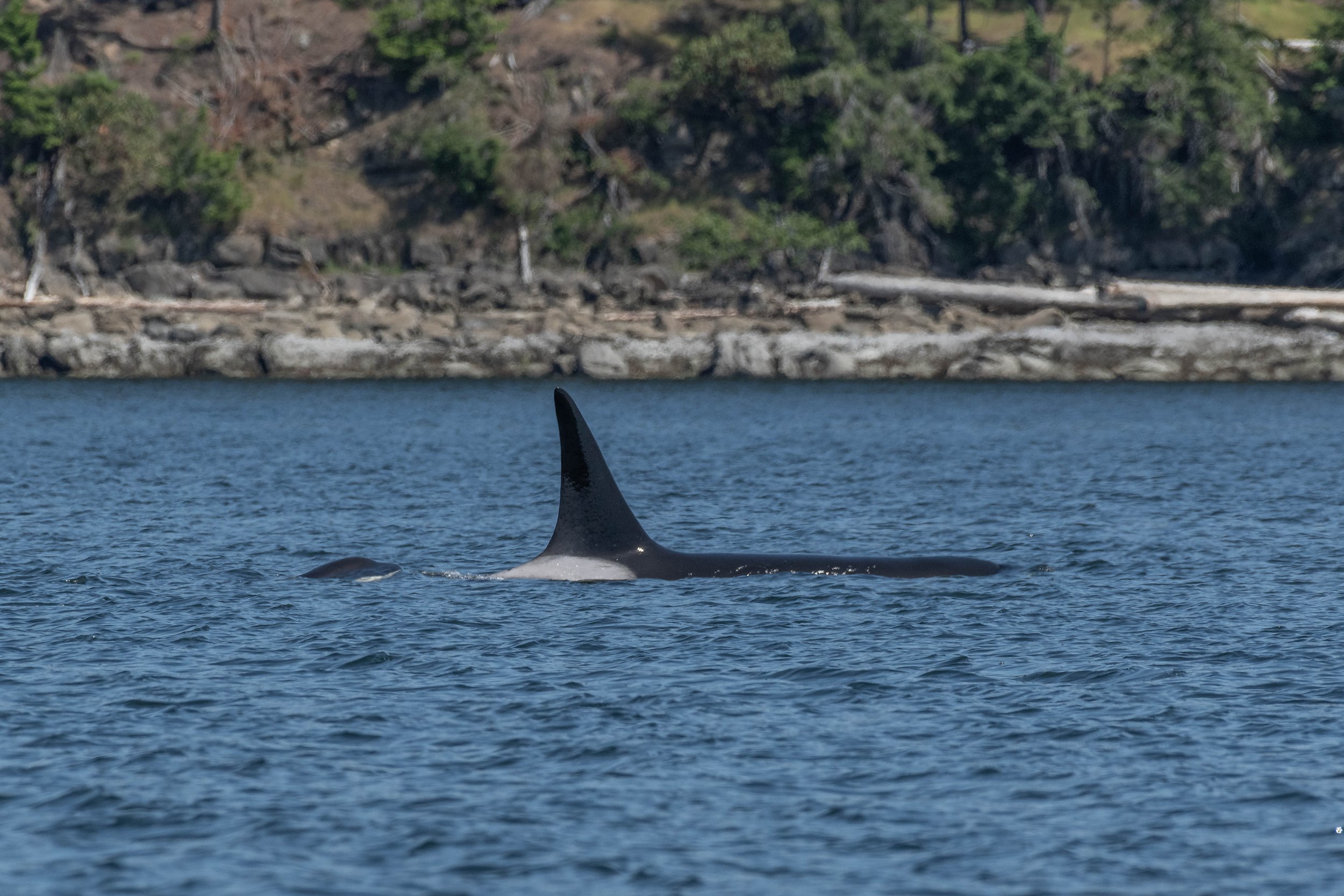May 12, 2024 - The T065Bs inside the Southern Gulf Islands
It was another beautiful day as our boat left the dock, and lucky for us there were already rumours of whales in the area! There was an early morning report of whales that were northbound in Northumberland, but we figured they would be long gone by the time we were off the dock and it would take some searching in the Strait of Georgia before we found them again. A pod of orca can travel about 100 miles in a given day if they want to, but it seems this pod didn’t want to today.
With an update from one of our off-duty naturalists spending time at Dodd Narrows, we knew these whales were headed south again! Our boat turned into Northumberland Channel and decided to start heading south towards the Narrows, and caught up with the pod. It was a pod we had been seeing often lately, the T065Bs! This pod currently has 4 individuals:
T065B Chunk (1993)
T065B1 Birdsall (2011)
T065B2 Nettle (2019)
T065B3 (2023)
As we found them, they seemed to be in travel mode, transitioning between moving fast and slower through the water and coming up in unpredictable ways. This could indicate that the whales were scavenging along their travels. While we were with them this time, they didn’t seem to come across anything or change their behaviour much. This led to many wonderful looks at these creatures, with their tall black dorsal fins cutting swiftly through the water.
After a while, it was time to leave the T065Bs for their southern travels, and we took off to see what else we would be able to find for the day. We started by heading through the Islands, out into the Strait of Georgia, where we saw some pinnipeds! There was plenty of little rock sausages on the shore (aka Harbour Seals) as well as some Steller Sea Lions in the water.
We continued to cruise through the smooth waters, making one last stop at the Gabriola Bluffs for the Bald Eagles and the Cormorants before returning to Nanaimo. What a fin-tastic day! All the photos from the trip taken by Naturalist Aly Kohlman can be viewed below.
A Bald Eagle flew by us on our journey.
T065B3 surfacing to the left of T065B2 Nettle.
This sprouting male is T065B1 Birdsall!
Can you see the missing piece from the dorsal fin that T065B Chunk is named for?
T065B2 Nettle and T065B1 Birdsall surfacing together.
T065B1 Birdsall with another family member just about to break the surface.
T065B3 travelling behind big brother T065B1 Birdsall.
T065B Chunk, T065B2 Nettle, and T065B1 Birdsall surfacing together.
Can you spot the Rhinoceros Auklet Photobombing this family photo?
T065B Chunk surfacing with T065B2 Nettle just in front of her.
The newest member of the T065Bs, T065B3, shows off their eye patch following T065B Chunk and T065B2 Nettle.
Here is Chunk with two of her kids just about to break the surface behind her, can you spot them both?
From left to right: T065B2 Nettle, T065B3, and T065B Chunk
T065B2 Nettle swimming away from the camera.
T065B Chunk swimming away from us.
Some cute little rock sausages.
Look at this Harbour Seals little tail!
A big Steller Sea Lion swimming nearby.
Just look at those Whiskers!
A Double-Crested Cormorant on the left, and a Pelagic Cormorant on the right.
Some lovely purple Ochre Stars on the Gabriola Bluffs.
Did you know even though the colour is different, the purple and orange stars here are both the same species?
A peak out of the nest from one of the Bald Eagle parents!























